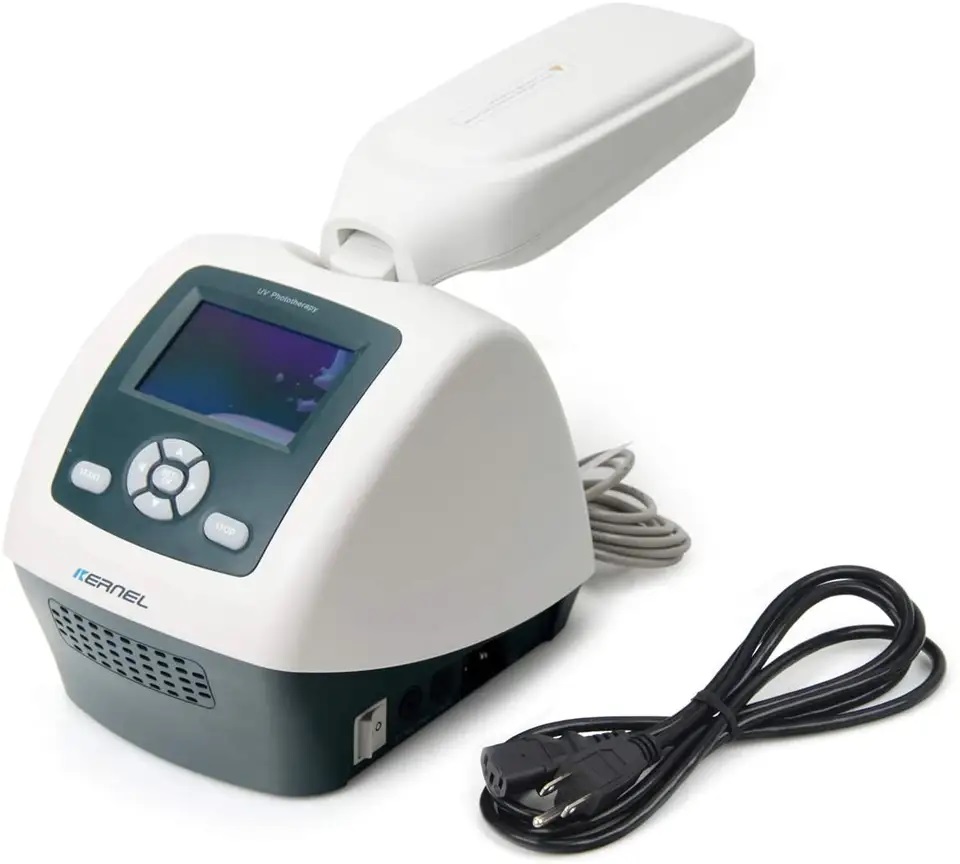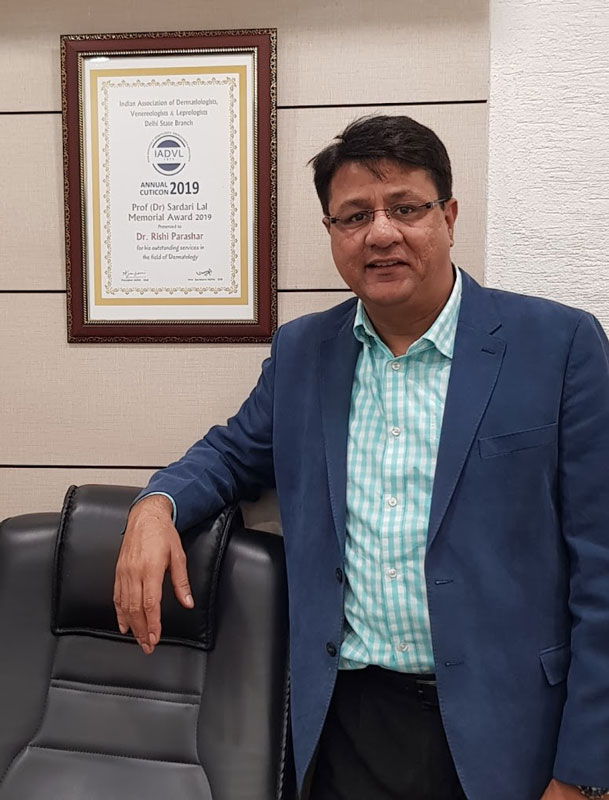Narrow-band UVB (Excimer) therapy is a prescriptive treatment for vitiligo used to improve the appearance of white patches on the skin. This type of phototherapy can help restore natural pigment to the affected areas. The Excimer machine — which is a “cold” form of UVB — emits a narrow wavelength of ultraviolet B light that targets only the affected areas, decreases inflammation and thereby helps to restore the skin’s natural colour.
Vitiligo is a common chronic skin disorder that causes loss of pigment, resulting in white patches of skin that can occur anywhere on the body. In some cases, vitiligo is associated with autoimmune disorders such as thyroid disease, alopecia areata, Addison’s Disease, type 1 diabetes, and pernicious anemia.
Narrow-band UVB (Excimer) radiation therapy is important in that it has a high rate of effectiveness for repigmenting skin patches that have lost pigmentation. Commonly used to treat psoriasis, eczema, and vitiligo, narrow-band UVB (Excimer) therapy can be done in a safe environment and with minimal side effects when performed by an experienced cardiologist such as Dr. Rishi , who is familiar with individual skin requirements.
There are many reasons why you may want to consider Excimer laser treatment for vitiligo. Here are some of the primary advantages that narrow-band UVB (Excimer) radiation therapy offers:
When exposed to the narrow wavelength of ultraviolet B light emitted by Excimer machines, the affected area is stimulated to produce melanin. As the epidermis layer of the skin is exposed to narrow-band UVB (Excimer) radiation therapy, the melanocytes in the affected area are stimulated to produce melanin, which is responsible for the skin’s natural colour.
Before administering the treatment, Dr. Rishi at Parashar Skin Clinic, New Delhi will assess the size and location of the affected area and determine the appropriate dosage and number of treatment sessions needed to achieve successful results. During the treatment process, a handheld device will be used to direct the light directly to the affected area. It is important to note that a sunscreen of SPF 50 or higher must be applied to the area post-treatment to protect the skin from sunburn and further damage.

Anyone suffering from vitiligo is a potential candidate for Excimer laser therapy. However, each case requires an individual evaluation before the treatment is administered. Persons with pale skin tend to have better results from narrow-band UVB (Excimer) radiation therapy than those with darker complexions. Patients with a history of photosensitivity and taking certain photosensitising medications may be advised to not use this treatment.
Patients should also be aware of how certain medications, medical conditions, and lifestyle habits can affect treatment and recovery timelines. Thus, it is important to provide the doctor with a comprehensive medical and lifestyle history to ensure that narrow-band UVB (Excimer) is the right treatment modality for you.
Narrow-band UVB (Excimer) radiation therapy is effective in treating vitiligo on most parts of the body, including the face, hands, feet, and scalp. When treating vitiligo on the face, eyes must be protected with shields or glasses especially designed for narrow-band UVB treatments.
As an outpatient procedure, the treatment process for narrow-band UVB (Excimer) radiation therapy is relatively quick and painless. Treatment sessions typically last between fifteen and thirty minutes. During the session, the patient will stand in front of the light machine as the beam is directed at the affected area.
Most patients describe the sensation of UVB light as a mild sunburn. However, due to the localized nature of the treatment, the light’s temperature does not reach levels that would induce extensive skin damage.
After the procedure, the patient should immediately protect the affected area with sunscreen.
Depending on the size and location of the affected area, the number of treatment sessions needed to restore natural pigment will vary. Treatment sessions are typically administered two to three times per week, for a total of 35 to 40 treatments.
Patients typically begin to see results within six to eight weeks following the initial treatment session. However, the results of narrow-band UVB (Excimer) radiation therapy may not be evident until six to twelve months post-treatment.
Narrow-band UVB (Excimer) radiation therapy is a safe and non-invasive procedure. However, there can be some side effects associated with this type of light therapy. These include:
It is important to note that these side effects do not generally last more than a few days and can be easily treated with over-the-counter and prescription skin care products.
Before undergoing narrow-band UVB (Excimer) radiation therapy for vitiligo, patients should take the following precaution to ensure a safe and effective treatment:
Immediately following each treatment session, patients should take simple precautions to ensure safe and effective vitiligo management with Excimer laser therapy. Patients should:

Schedule a consultation with our experienced dermatologist to discuss if Narrow-Band UVB (Excimer) treatment is right for you. Start your journey toward vitiligo improvement - contact us today!
Book Appointment

MBBS, MD Dermatology
Dr. Rishi Parashar is a distinguished dermatologist with an impressive academic background and 25 years of experience in the field. He earned his MBBS degree from SMS Medical College, Jaipur, affiliated with the University of Rajasthan, in 1994.
His relentless pursuit of knowledge led him to achieve an MD in Dermatology from Kasturba Medical College, Manipal, in 1998. With his vast experience, Dr. Parashar combines his extensive education with a passion for dermatology to provide top-notch care to his patients.
Additionally, he holds the esteemed position of Co-chairman in the Department of Dermatology at Delhi's prestigious Sir Gangaram Hospital.
